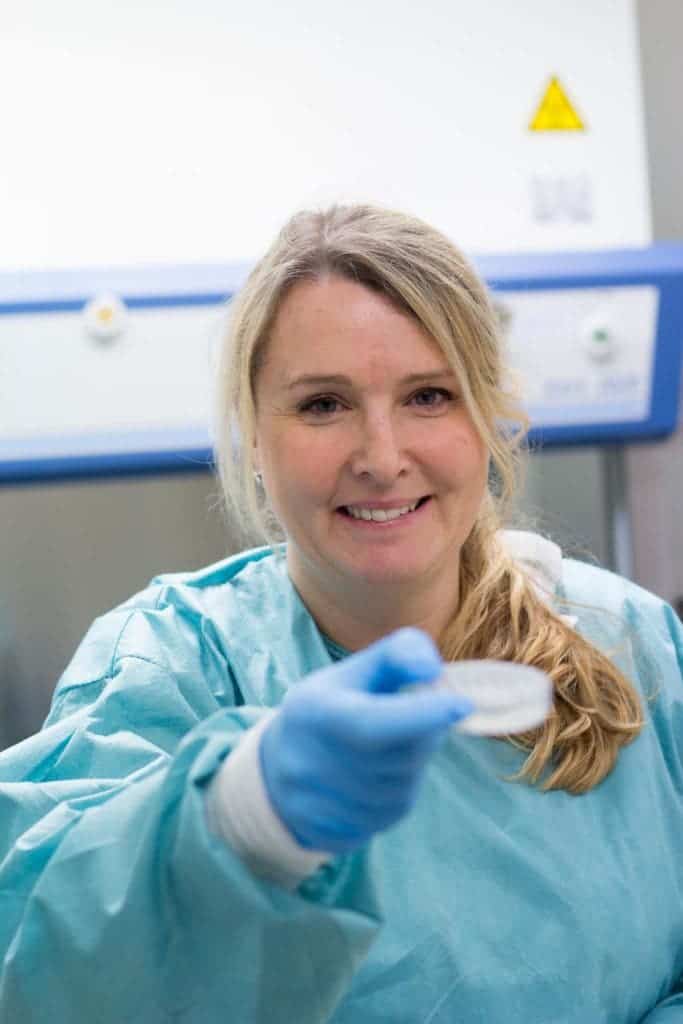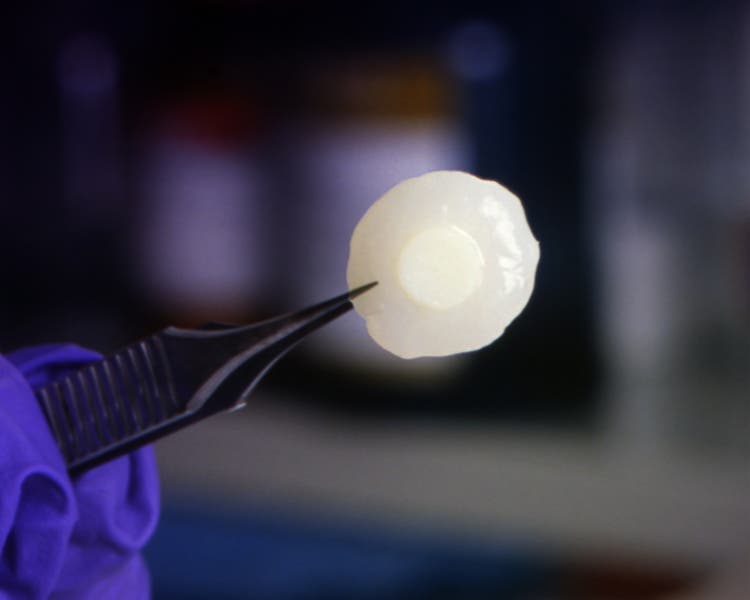3D printers have been causing revolutions in many different fields, with materials as different as food, mud, plastic, and plants. The game-changer is that you can create very precise, complex shapes that weren’t able to be created before. Another use of 3D printing is a potentially life-saving one. 3D bioprinters are being developed that can print out tissues and organs. Some that are being tested now are skin cells, bone, heart tissue, and now cartilage. A team of researchers at Sahlgrenska Academy has created cartilage tissue by printing stem cells with a 3D-bioprinter. It appears to be just like human cartilage and could be used to replace damaged cartilage.
“In nature, the differentiation of stem cells into cartilage is a simple process, but it’s much more complicated to accomplish in a test tube. We’re the first to succeed with it, and we did so without any animal testing whatsoever,” says Stina Simonsson, Associate Professor of Cell Biology, who led the research.

The researchers took cartilage cells from patients who had recently had knee surgery and their cells were manipulated to become “pluriplotent”, so they can develop into many different types of cells. Next, they created a scaffold to print the cells on. The stem cells were coated with nanocellulose to survive the printing process. Once printed, the stem cells multiplied and were given growth factors so they differentiated into cartilage tissues. The cells formed cartilage cells on the printed structure. After a few weeks, the cells lost their ability to change into other cells. This change is good because pluripotency increases the risk of tumour formation.
“We investigated various methods and combined different growth factors. Each individual stem cell is encased in nanocellulose, which allows it to survive the process of being printed into a 3D structure. We also harvested mediums from other cells that contain the signals that stem cells use to communicate with each other so called conditioned medium. In layman’s terms, our theory is that we managed to trick the cells into thinking that they aren’t alone,” says Stina Simonsson.

The 3D bio-printed structure is very similar to human cartilage. Experienced surgeons did not see a difference between natural and bio-printed cartilage. The cells appear well-formed under the microscope and similar to the patients’ own cartilage.
When this method is perfected, cartilage could be 3D printed from a patient’s own stem cells to repair damaged cartilage or heal osteoarthiritis (cartilage decay in the joints). The method can create a lot of cartilage, making it very useful for cartilage replacement. Right now, it isn’t known how compatible it is in the human body. The structural material needs to be able to break down and be absorbed safely by the body so only cartilage is left. Further development and testing need to be conducted. Bioprinting has a lot of potential; in the near future, tissues and organ could be printed on demand.
Journal reference: Nguyen, D. et al. 2017. Cartilage Tissue Engineering by the 3D Bioprinting of iPS Cells in a Nanocellulose/Alginate Bioink. Scientific Reports.






